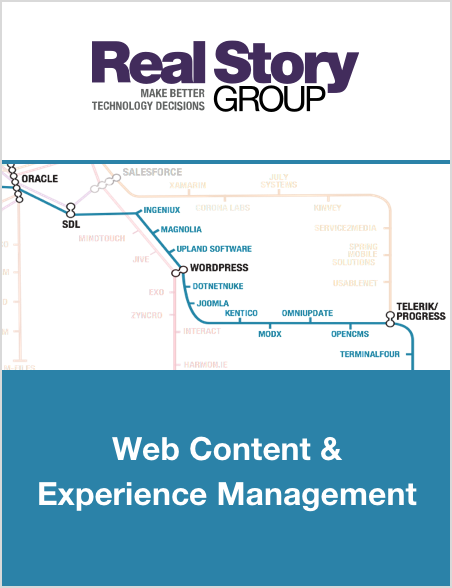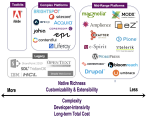What to Make of Salesforce's Latest CMS
Within the Salesforce Winter 20 Release comes news of the general availability of "Salesforce CMS," an upgrade to content management capabilities already available for some time in the vendor's Community platform. Now Salesforce is pitching it as a more generalized web and omnichannel content management platform.
What should you make of it? I've got three lessons to share.
Not the First Rodeo
This is not the first CMS from Salesforce. We started evaluating the vendor's "site.com" hybrid CMS / Portal offering in 2012 at a time when Salesforce hyped it as the web platform of the future for inbound marketers. Salesforce started small — site.com began as just a simple authoring system — promised rapid innovation across its thrice-yearly releases, and several large enterprises came on board.
But then...Salesforce realized that developing a full-blown CMS on the force.com platform would prove very, very difficult, and turned their attention elsewhere amid the big push for Lightning. Like most old CMS platforms, site.com didn't really die — it just faded away. (One more proof-point that even more so than smaller vendors, big vendors will change their minds at a drop of a hat.)
Lesson #1: before investing in this platform, wait at least a year to assess the true level of Salesforce commitment to its CMS
A CMS Doth Not Always an Experience Platform Make
Not everyone needs a full-blown Web Content & Experience Management solution, but if you do, you'll find a broad spectrum of potential solutions. In RSG's research, we evaluate about 30 WCM platforms. Across them you'll see a wide range of approaches to managing widgets, blocks, pages, microsites, and other digital experiences. The ones that are consistently stable have been doing this for more than a decade.
Salesforce wants to leverage its CRM to help personalize these experiences. Two thoughts on this:
- Your incumbent CMS can probably already do this
- In the future you are likely going to want to deploy a CDP (rather than your CRM) as the authoritative source of prospect and customer data for customized engagement
Whatever frustrations you may have with your incumbent WCM platform — and I know a lot of you are frustrated, especially with legacy vendor solutions — don't jump out of the frying pan before getting very clear that you won't end up in the fire.
Lesson #2: never let a vendor drive your CMS requirements, and remain especially wary of Salesforce marketing messages getting out in front of actual shipping feature sets.
Skeptical About Omnichannel
Salesforce is touting the updated tool as an "omnichannel" platform. This is a welcome aspiration, but not an easy problem to solve. Right now it appears that omnichannel in this context means mostly publishing to multiple communities and across multiple languages. So, still pretty narrow.
To be sure, there's an emerging market around truly omnichannel content management technology, To learn more about these tools, please join me for a fast-paced webinar on OCPs next week.
There's a lot of work Salesforce will need to undertake to broadly feed content to other engagement channels: connectors, simulation, tracking, very advanced asset management (e.g., compound assets), object-oriented storage, and more. Could Salesforce grow into this? Maybe, but it will take a lot of engineering, and a vendor-agnosticism we don't typically see at this tier.
Lesson #3: Remember that a future-proof stack will clearly separate data / content / engagement layers.
What do you think? Let's continue the conversation on LinkedIn...









